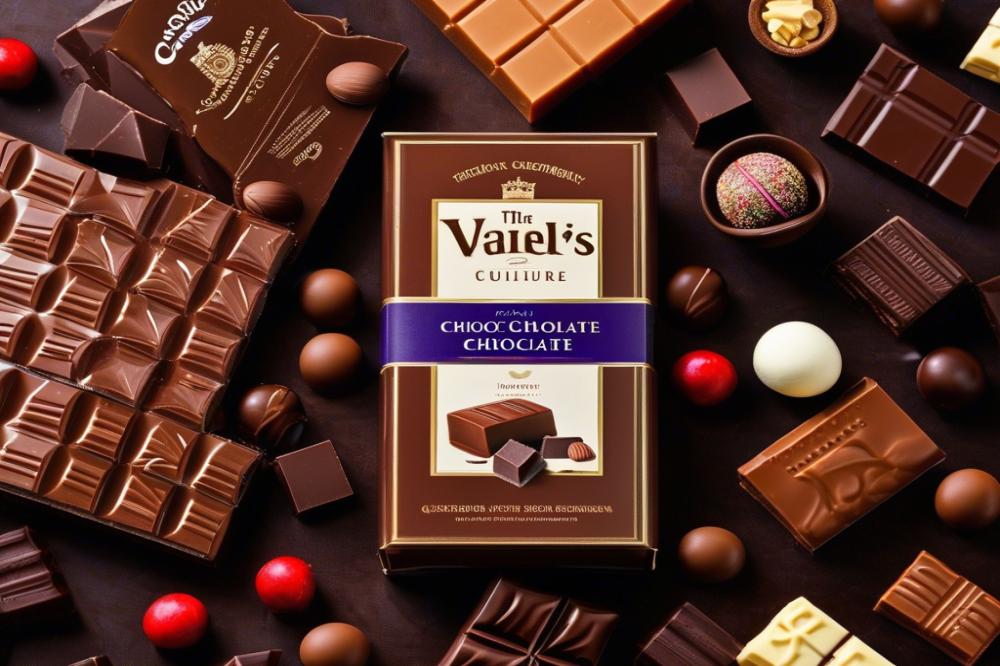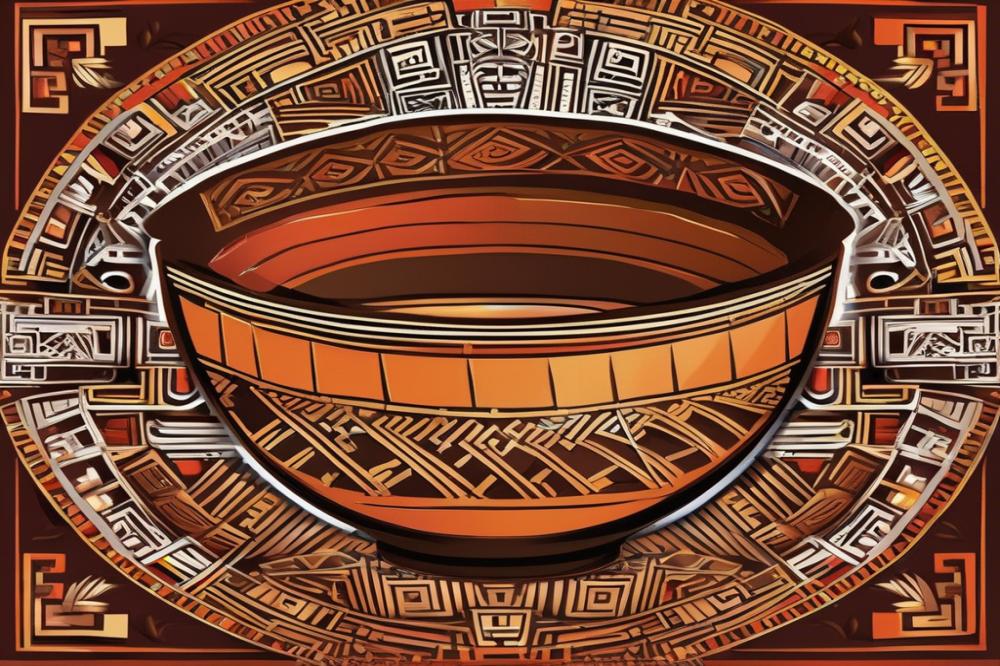Introduction
The significance of chocolate in the UK is hard to overstate. For many, it represents comfort and indulgence. It forms an integral part of daily life, celebrations, and traditions. chocolate preferences are diverse, ranging from rich dark varieties to sweet milk chocolates. This broad appeal has helped to shape the UK’s confectionery market.
In the context of European trends, the UK’s chocolate consumption stands out. It has largely embraced both mass-produced treats and artisan creations. British chocolate brands have carved out a notable presence, with Cadbury and Galaxy being household names. Meanwhile, the rise of artisan chocolate makers reflects a growing appreciation for quality and craftsmanship.
Per capita chocolate consumption in the UK is significant. Reports suggest that on average, each person consumes around 8-10 kilograms annually. This figure illustrates a strong national interest in chocolate, aligning closely with trends across Europe. Special chocolate events further highlight this enthusiasm, featuring tastings and workshops. Such occasions not only showcase different types of chocolate but also educate consumers.
UK chocolate history is rich and varied, tracing its roots back to the cocoa trade. Over the centuries, tastes have evolved, and chocolate has become a staple in British culture. Consumers often seek new flavors and experiences, pointing to changing chocolate trends in the market. Overall, the ongoing passion for chocolate continues to flourish throughout the nation, reflecting a complex relationship with this beloved treat.
The History of Chocolate in the UK

Early Introductions of Chocolate in the UK
Chocolate first landed on British shores in the 17th century. Originally, it came as a drink favored by the aristocracy. The beverage was often bitter and served hot, mixed with spices. Its exotic origins from Central America made it a symbol of luxury. As chocolate spread, it quickly gained popularity among the upper classes.
Evolution of Chocolate Consumption from the 17th Century to Present
By the 18th century, chocolate shops started to appear, allowing more people to enjoy this once-exclusive drink. Over time, it transformed from a beverage to a solid treat. British chocolate entered a new phase in the 19th century with the invention of milk chocolate. As taste broadened, chocolate preferences shifted, leading to the popularity of both bars and confections. Today, chocolate is not just a snack; it is celebrated through various chocolate events and festivals.
Impact of the Industrial Revolution on Chocolate Production
The Industrial Revolution greatly changed how chocolate was made. Machines allowed for mass production, reducing costs and increasing availability. As a result, chocolate brands emerged, making sweet treats accessible to the working class. Techniques improved, leading to smoother textures and a variety of flavors. With rising chocolate sales, the market flourished, and new varieties, like snack-sized bars, became common.
Significant Milestones in UK chocolate history
Several milestones mark the journey of chocolate in the UK. For instance, the launch of Cadbury Dairy Milk in 1905 was a game-changer. This product set the standard for milk chocolate in the country. Artisan chocolate makers began to thrive in the late 20th century, catering to niche markets. New chocolate trends continue to emerge, including dark chocolate and vegan options. As per capita chocolate consumption has risen, so too has the appreciation for high-quality chocolate products. The history of British chocolate illustrates the evolution from luxury to everyday delight.
Chocolate Preferences Among the British

The British have a fondness for a range of chocolate products. Cadbury, for example, stands out as one of the leading chocolate brands in the UK. Dairy Milk is especially popular among many families. It competes with iconic treats like Mars Bar and Snickers, which also have a strong presence. Each of these brands has a long-standing history in British chocolate culture.
In comparison to other European countries, UK chocolate preferences show interesting contrasts. For instance, while the British enjoy milk chocolate, countries like Belgium and Switzerland lean heavily toward dark chocolate. Preferences vary widely, with some nations celebrating gourmet selections and others favoring classic candies. Per capita chocolate consumption in the UK remains significant, but the choices reflect broader tastes.
The Rise of Artisan Chocolate
Recently, artisan chocolate has seen a surge in popularity among UK consumers. Small producers focus on quality and creativity, often using fair-trade ingredients. These artisan chocolates offer distinct flavors that appeal to a discerning market. Chocolate events across the UK now highlight these unique products. Festivals and markets devoted to chocolate are popping up, allowing artisans to showcase their skills.
The trend toward artisan products shifts attention away from mass-produced offerings. As consumers seek more than just basic satisfaction, they look for experiences that enhance their enjoyment of chocolate. This movement influences UK confectionery culture significantly. Chocolate lovers prioritize richness and originality as they explore these new options.
Distinctive Features of UK confectionery Culture
British chocolate culture is also characterized by its fondness for novelty. Popular treats often feature creative marketing and packaging to entice customers. Seasonal chocolates, such as Easter eggs and Christmas treats, drive sales during specific times of the year. These unique offerings foster a sense of tradition as families celebrate occasions together.
Another notable aspect is the influence of childhood memories. Many adults still cherish the chocolates they enjoyed growing up. This nostalgia can impact purchasing decisions, leading consumers to choose familiar brands. Thus, the connection between chocolate and emotion plays a significant role in shaping preferences.
With ongoing developments, it’s clear that chocolate trends will continue to evolve. The balance of established favorites and new artisan entries contributes to a diverse marketplace. As British palates expand, the evolution of chocolate options in the region promises exciting possibilities for the future.
Per Capita Chocolate Consumption in the UK
Statistics reveal that the UK has a strong preference for chocolate, with per capita consumption estimated at around 7.5 kg annually. This figure places the nation among the leading chocolate consumers in Europe. Popular chocolate brands dominate the market, showcasing a diverse range of products from classic bars to innovative flavors.
When compared to other European countries, the UK holds its own. Switzerland, for example, has one of the highest rates of consumption at about 9 kg per person. Belgium, known for its artisan chocolate, is not far behind. The competition is fierce, yet the UK maintains a steady following of its own confectionery traditions.
Several factors influence these consumption patterns. Marketing plays a significant role, with brands often using seasonal events and holidays to boost sales. For instance, during Easter and Christmas, chocolate sales surge, driven by consumer traditions. Additionally, health trends can sway preferences, leading some to choose dark chocolate for its reputed benefits.
Regional differences also add complexity to chocolate consumption. People in England tend to favor milk chocolate, while those in Scotland show a slight preference for dark varieties. Furthermore, urban areas often showcase a wider variety, promoting new chocolate events and trends. Artisan chocolate shops flourish in cities, attracting locals and tourists alike.
British chocolate has a rich history that shapes its present-day consumption. Traditional favorites like Cadbury and Galaxy remain beloved, while new, sophisticated options have emerged. These shifts in market demand reflect the evolving tastes of consumers, bridging classic and contemporary favorites. With chocolate preferences shifting, the UK’s landscape continues to change.
The Landscape of UK Chocolate Brands
The UK market boasts a rich variety of chocolate brands. Well-known giants like Cadbury and Mars dominate the landscape. These companies produce a large volume of chocolates that many people have enjoyed for decades. Cadbury Dairy Milk, for instance, remains a staple in British confectionery. Yet, it is not just the big names that define this scene. Artisan chocolatiers have carved out their own niche, focusing on quality and craftsmanship.
The Role of Major Companies vs. Artisan Chocolatiers
Large corporations play a vital role in chocolate sales and distribution. Their extensive reach allows them to maintain consistent supply and pricing. On the other hand, artisan chocolate makers often emphasize smaller batches and unique ingredients. They cater to specific chocolate preferences, including vegan and organic options. While mass-produced chocolates offer familiarity, artisan offerings provide an experience that speaks to the growing demand for quality and authenticity.
Emergence of New Chocolate Brands
Recent years have seen a surge in the appearance of new chocolate brands. Start-ups focus on innovative flavors and sustainable practices. These newcomers challenge traditional norms, sparking new chocolate trends that resonate with younger consumers. Their strategies often include direct engagement through social media campaigns and collaborations with local businesses. Emerging brands cater to a market that increasingly values ethical sourcing and customization.
Marketing Strategies and Consumer Engagement
Marketing strategies vary greatly among chocolate brands. Well-established companies often rely on nostalgic advertising that connects to chocolate history. Campaigns featuring iconic characters or memorable slogans tap into the emotional ties consumers have with their products. In contrast, new brands leverage digital platforms for direct engagement. They create interactive content, encouraging customers to share their experiences. Events such as chocolate festivals and tastings offer opportunities for brands to create personal connections.
Consumers in the UK are increasingly interested in the story behind their chocolate. Transparency about sourcing and production methods has become vital. This shift influences purchasing decisions. As chocolate preferences evolve, brands must adapt to retain relevance. Engaging storytelling can significantly impact perceptions and sales. Overall, the chocolate landscape in the UK remains dynamic and diverse.
Chocolate Events and Trends in the UK
Major Chocolate Events and Festivals
In the UK, chocolate events bring enthusiasts together to celebrate their favorite treat. The Chocolate Festival in London is one of the largest. It showcases artisan chocolate makers and larger chocolate brands, offering tastings, workshops, and demonstrations. Another notable event is the Cadbury World Chocolate Making Workshop in Birmingham. Here, visitors can learn about chocolate history and even create their own sweet delights. Additionally, many towns host smaller events throughout the year, making chocolate a community celebration.
Current Trends Shaping the Chocolate Industry
Trends in chocolate reflect changing consumer values. Sustainability has become a vital focus for many companies. Consumers increasingly seek brands that prioritize ethical sourcing. Fair trade certifications are becoming a significant selling point for consumers. Health-conscious products are also gaining traction. Choices like dark chocolate with lower sugar levels are popular among those mindful of their diets. Moreover, vegan and plant-based chocolates appeal to an expanding market.
The Influence of Social Media
Social media plays a crucial role in shaping chocolate culture. Platforms like Instagram help chocolate brands connect with younger consumers. Eye-catching photos of chocolate products draw attention and generate interest. Online influencers often promote unique flavors and artisan chocolates, influencing preferences. The internet provides a space for small businesses to thrive. Websites and blogs dedicated to chocolate reviews guide buyers towards discovery.
Future Trends in UK Chocolate Consumption
Looking ahead, several trends may define chocolate consumption in the UK. Personalization is likely to become increasingly important. Customized chocolates could attract consumers looking for one-of-a-kind gifts. Additionally, health and wellness trends may influence product development. Expect flavors infused with superfoods and insights from nutritionists. Innovative packaging, particularly eco-friendly options, may also rise in popularity. As chocolate consumers become more informed, transparency regarding ingredients will dictate brand loyalty.
Current per capita chocolate consumption in the UK is significant. People show a steady preference for British chocolate brands while seeking new experiences. With the growing demand for artisan chocolate, the market shows potential growth. Keeping an eye on these trends will reveal how chocolate preferences evolve over time.
Final Thoughts on UK Chocolate Culture
Summary of Key Insights
Exploring the depth of chocolate culture in the UK reveals a rich tapestry of history and evolving tastes. Chocolate has always held a special place in British hearts, from the chocolate houses of the 18th century to the modern-day bars and truffles. Consumer preferences have shifted significantly over the decades, mirroring broader social changes. Today, people are more informed about what they eat, showing a growing interest in quality and ethical sourcing. This shift highlights an appetite for artisanal products over mass-produced confections.
Ongoing Significance in Society
Chocolate plays a vital role in celebrations and everyday life in the UK. Birthdays, holidays, and special events are often marked with indulgent treats. The joy brought by a simple chocolate bar can’t be underestimated. Across age groups, enjoyment of sweets creates shared experiences and memories. For many, chocolate serves as an emotional comfort, symbolizing happiness and warmth. It continues to connect diverse communities through shared tastes and traditions, shaping the landscape of UK confectionery.
Looking Ahead
Future trends in chocolate consumption appear promising, as people become more adventurous in their choices. Innovative flavors and sustainable practices are likely to shape the market. Manufacturers must pay attention to the growing demand for healthier options. As chocolate preferences evolve, the industry can anticipate a wave of experimentation that embraces both tradition and modernity. The potential for growth in ethical and artisanal segments signals an exciting time ahead.
In conclusion, the UK’s chocolate story is far from over. The relationship between consumers and chocolate will continue to adapt, reflecting broader societal changes. The sweet legacy endures, promising a vibrant future filled with delightful experiences.



